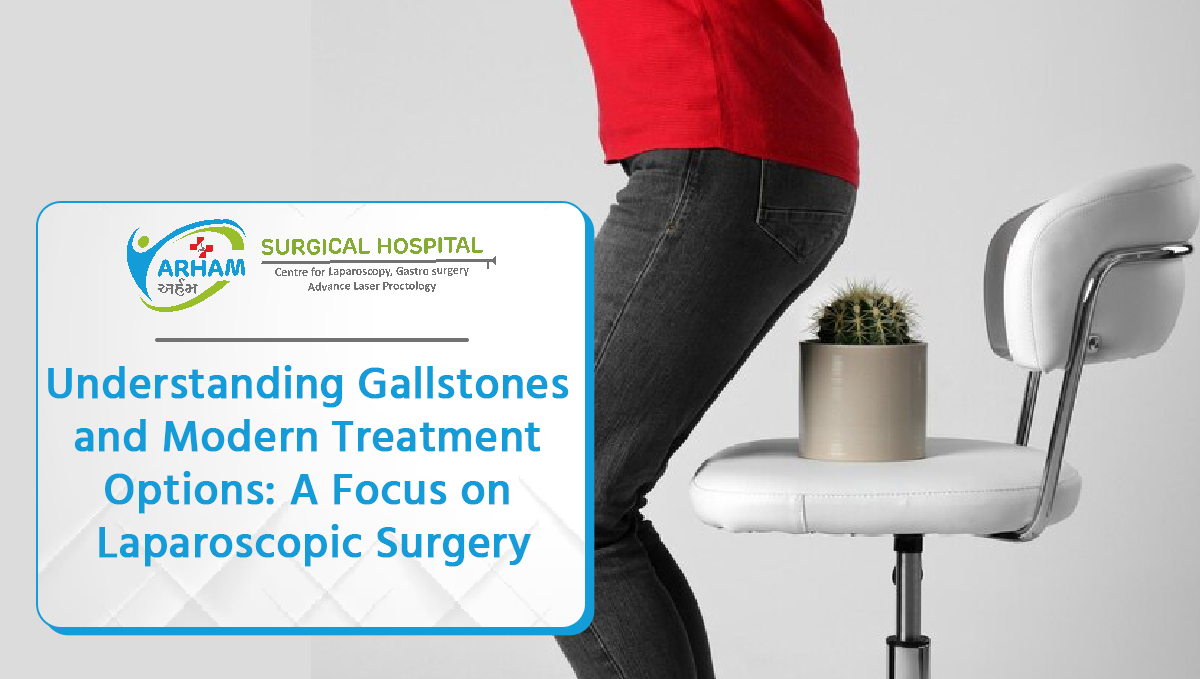Gallstones are a common yet often misunderstood condition that can significantly impact one's quality of life. If you’re struggling with gallstones and their disruptive symptoms, it’s essential to understand your treatment options, including the modern approach of laparoscopic surgery. This blog will delve into what gallstones are, the risk factors involved, and why laparoscopic gallbladder surgery might be the best choice for managing severe symptoms - Piles Doctor in Ahmedabad.
What Are Gallstones?
Gallstones are hard deposits that form in the gallbladder, a small organ located beneath the liver. These stones can vary greatly in size, from as tiny as a grain of sand to as large as an apple. They are primarily composed of cholesterol, salt, and bilirubin (a substance derived from the breakdown of red blood cells).
Gallstones can be asymptomatic or cause a range of issues when they obstruct the bile ducts, leading to pain and other complications. The severity of symptoms and the impact on daily life often dictate the need for treatment - Piles Doctor in Ahmedabad.
Risk Factors for Gallstones
- Obesity : Excess weight is a significant risk factor due to its impact on cholesterol levels and bile production.
- High-Cholesterol Diet : Diets rich in cholesterol can contribute to gallstone formation.
- Rapid Weight Loss : Losing weight quickly can disrupt the balance of substances in bile.
- Diabetes Mellitus : Individuals with diabetes are at a higher risk.
- Family History : A positive family history of gallstones can increase your risk.
- Gender and Age : Gallstones are more prevalent in women, particularly those over 65, pregnant women, and individuals with a family history of the condition.
Treatment Options for Gallstones
The management of gallstones depends on the severity of symptoms and their impact on your life. Here are the main approaches:
1. Active Monitoring
For asymptomatic gallstones discovered incidentally, the approach involves regular monitoring without immediate intervention. However, if symptoms such as jaundice (yellowing of the skin) or severe abdominal pain occur, seek medical advice promptly.
2. Conservative Management
If symptoms are mild and infrequent, managing pain with over-the-counter medications and adjusting your diet may be sufficient. A diet low in cholesterol and rich in fiber can help prevent further episodes - Piles Doctor in Ahmedabad.
3. Medications
For small, non-cholesterol-based gallstones, medications such as ursodeoxycholic acid can be prescribed to dissolve the stones over time.
4. Surgical Interventions
When symptoms are severe and disrupt daily life, surgical options are considered.
Surgical Treatments for Gallstones
Surgical removal of the gallbladder, known as cholecystectomy, is often recommended when symptoms are significant. Here are the main surgical approaches:
1. Laparoscopic Gallbladder Surgery
- Description : This minimally invasive procedure, also known as keyhole surgery, is performed under general anesthesia. Surgeons make a few small incisions in the abdomen to insert a laparoscope and other surgical instruments.
- Benefits : It is time-saving, minimally invasive, and typically involves a quicker recovery period of about 10 days. The procedure usually lasts 60-90 minutes.
2. Single-Incision Laparoscopic Surgery
- Description : An advanced technique where the gallbladder is removed through a single incision in the abdomen.
- Benefits : This approach reduces scarring and recovery time compared to traditional laparoscopic methods.
3. Open Surgery
- Description : A more invasive procedure involving a larger incision in the abdomen. This option is reserved for cases where laparoscopic surgery is not feasible, such as in pregnant women in their third trimester, individuals with extreme obesity, or those with unusual anatomical structures.
- Benefits : Though more invasive, it is sometimes necessary for complex cases.
4. Endoscopic Retrograde Cholangio-Pancreatography (ERCP)
- Description : This technique involves the endoscopic removal of gallstones from the bile ducts without removing the gallbladder.
- Benefits : It is useful for removing stones that are causing blockages but doesn’t address the underlying gallbladder condition.
Why Choose Laparoscopic Surgery?
Laparoscopic gallbladder surgery has become the preferred method for treating symptomatic gallstones due to its numerous advantages. The minimally invasive nature of the procedure means:
- Reduced Recovery Time : Patients typically recover faster and experience less postoperative pain compared to open surgery.
- Minimal Scarring : Smaller incisions lead to less visible scarring.
- Quick Return to Daily Activities : Many patients can return to their normal routines sooner than with traditional surgery.
Conclusion
Gallstones can be a significant health concern, particularly when they cause severe symptoms that impact your quality of life. Fortunately, advancements in medical technology, such as laparoscopic surgery, offer effective and less invasive treatment options. By understanding your condition and discussing these options with your healthcare provider, you can make informed decisions about the best approach to managing gallstones and improving your overall well-being Hernia Surgeon in Ahmedabad.
If you’re experiencing symptoms or have been diagnosed with gallstones, consult with a healthcare professional to explore the most appropriate treatment options for your situation.
Feel free to modify or expand this blog post to better fit your needs or audience.


